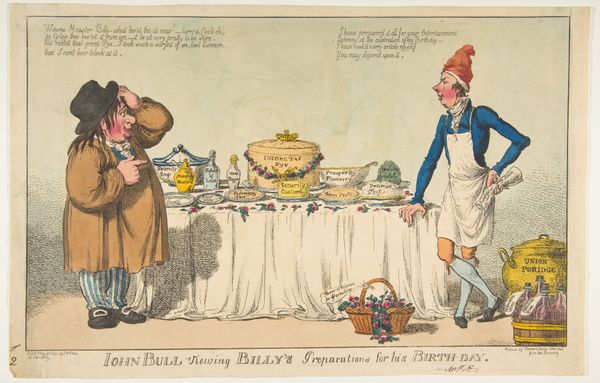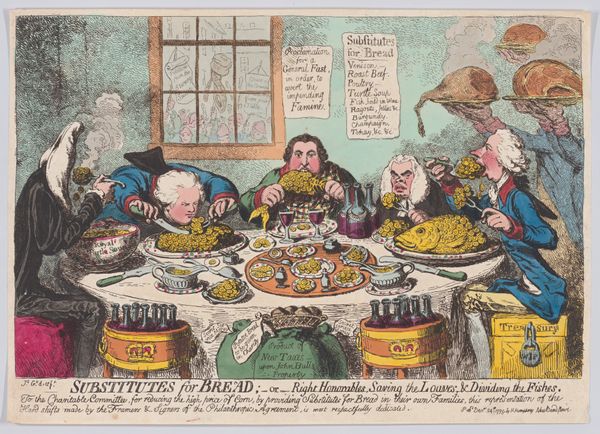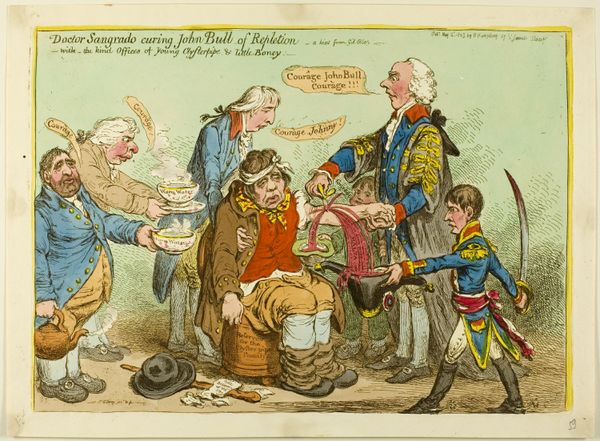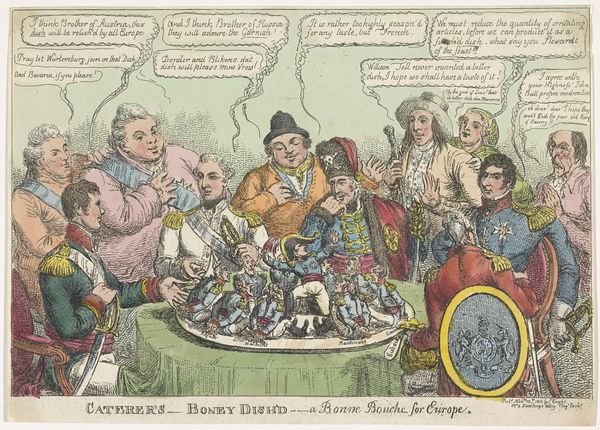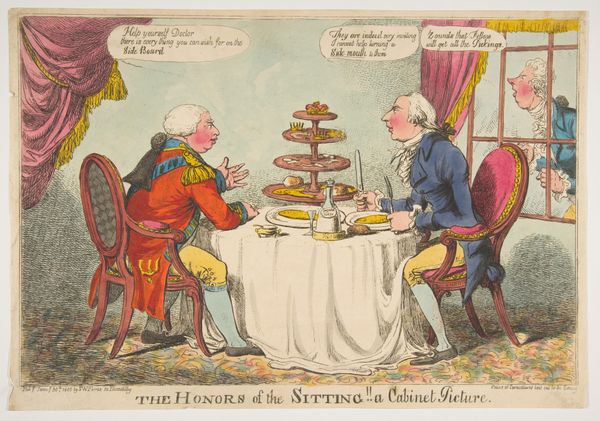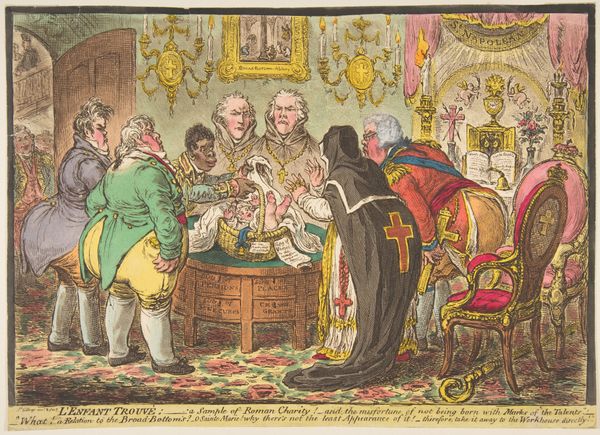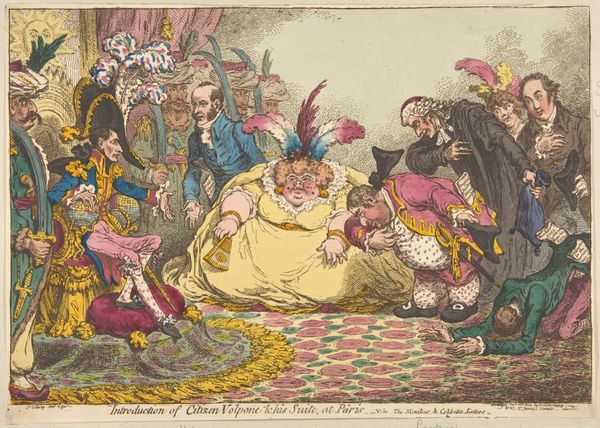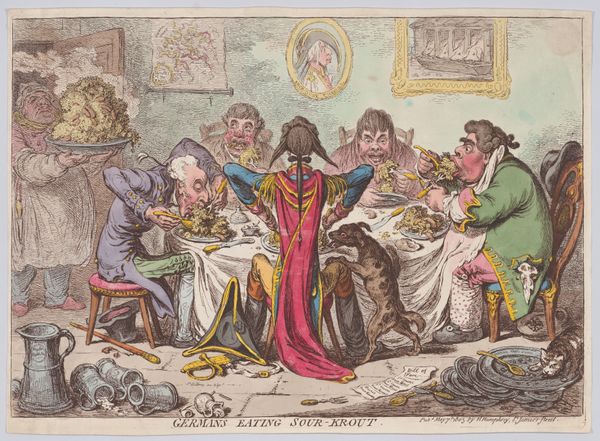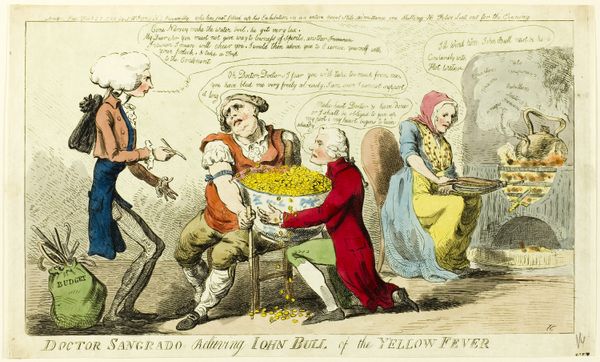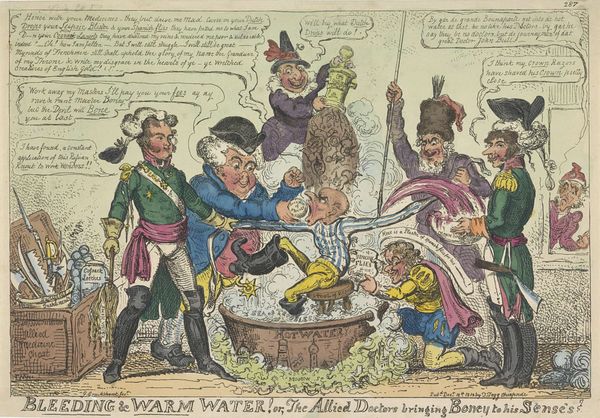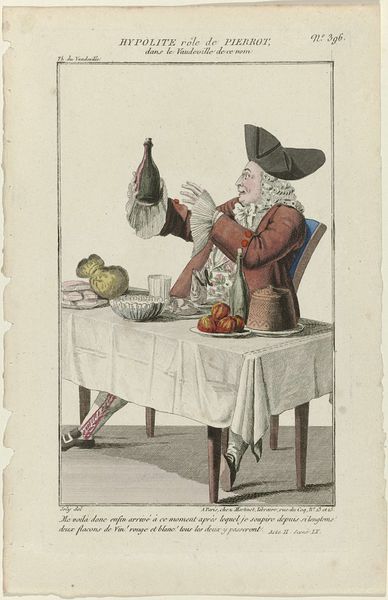
The Plumb-Pudding in Danger;–or–State Epicures Taking un Petit Souper 1805
0:00
0:00
print, etching
# print
#
etching
#
caricature
#
romanticism
#
history-painting
Dimensions: plate: 10 1/4 x 14 1/4 in. (26 x 36.2 cm) sheet: 10 3/8 x 14 7/16 in. (26.4 x 36.6 cm)
Copyright: Public Domain
Curator: Before us, we have "The Plumb-Pudding in Danger;–or–State Epicures Taking un Petit Souper", a hand-colored etching by James Gillray created around 1805. Editor: The immediacy is striking. The cartoonish exaggeration throws the power dynamics into sharp relief. I can almost feel the tension, like a twisted comedy about to unfold. Curator: Look at the tools they're using – a carving knife versus a dainty fork. England's Pitt has the knife to carve out the Ocean for himself while France’s Napoleon uses his sword to cut into Europe. The artist really drives home the message of greed and control with these choices. Editor: Exactly. Consider plum pudding itself – its rich, high calorie recipe was costly for many at the time, a luxury. Here, Gillray depicts England and France attempting to devour the entire world, but only those with such insatiable and unnatural desires would wish to partake in such gluttony, highlighting an era marked by both nationalistic ambitions and access. What’s really fascinating is how the act of consumption is transformed into political theater. Curator: I’m also struck by the date; 1805, a turbulent time of expansion. He’s using very particular, and reproducible medium to target as many people as possible. Think about it: what other choice than etching to rapidly spread such visual information so publicly, so quickly, among the English populace? Editor: That speaks to the power of images to shape and solidify these historical actors into cultural symbols. Pitt’s thin, severe face and Napoleon’s sideways glare - they're not just political figures; they're figures of legend. The image is deeply embedded in a symbolic tradition. Curator: I see it more as a snapshot of the processes of empire – the tools, the greed, and the material realities underpinning territorial conquest – presented for mass consumption as if the populace is supposed to accept what has happened without their own input. It makes me reflect on the artist’s agency here: what part did he wish to play in this social theater? Editor: Whether critic or propagandist, Gillray's focus on potent visual language helped to shape our understanding of power itself and gave future generations new material to think with, didn’t it? Curator: Absolutely. The etching allows us to revisit not only the past but to reconsider the power and labor inherent in printmaking at a pivotal moment in history.
Comments
No comments
Be the first to comment and join the conversation on the ultimate creative platform.
